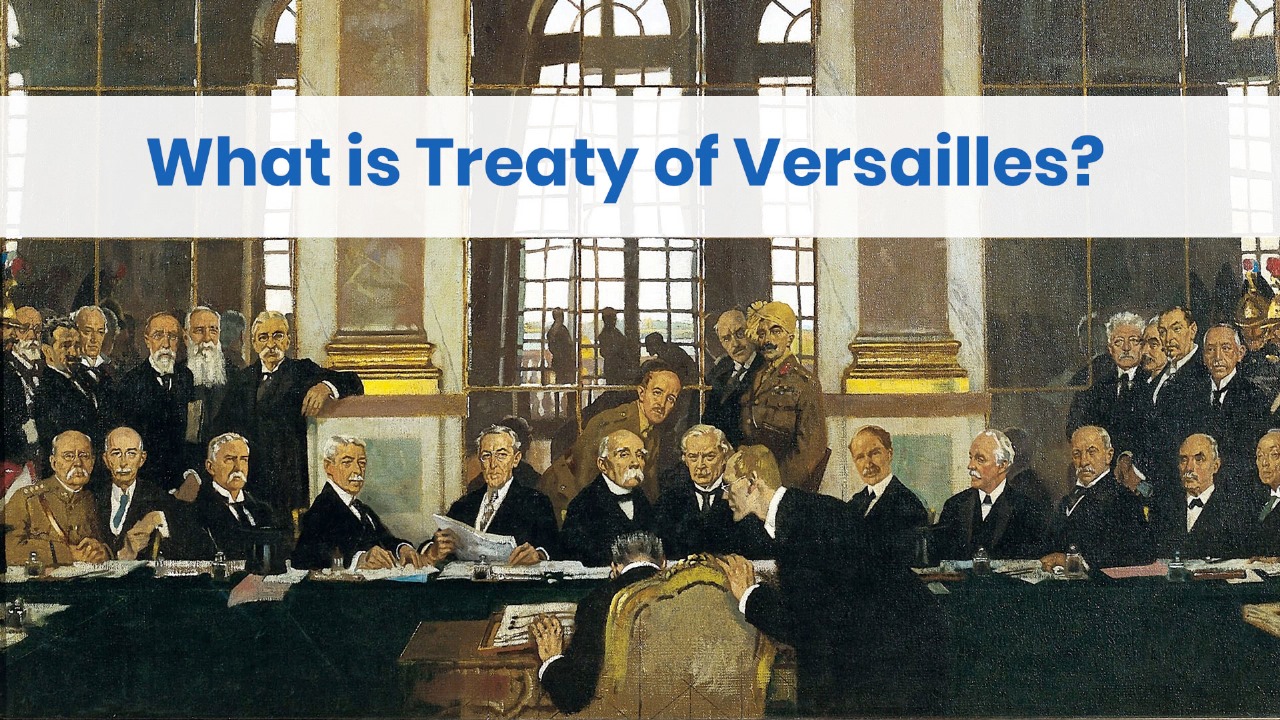Treaty of Versailles:
The Treaty of Versailles is a peace treaty that officially ended World War I. It aimed to establish terms of peace between the victorious Allied Powers and Germany. The treaty emerged from the Paris Peace Conference, where leaders from various nations convened to address the aftermath of the war and prevent future conflicts.
- Signed on: June 28th, 1919
- Purpose:
- Establishing Peace: The treaty aimed to formally end hostilities between the Allied Powers and Germany, providing a structured resolution to the conflict.
- Accountability: It sought to hold Germany accountable for its role in the war through the imposition of reparations, which were intended to compensate the Allied nations for the costs and damages incurred during the conflict.
- Territorial Adjustments: The treaty aimed to redraw the map of Europe by redistributing territories. This was intended to weaken Germany strategically and prevent future aggression by creating buffer zones around it.
- Military Limitations: The treaty imposed strict military restrictions on Germany, aiming to limit its military capacity and deter any potential resurgence of militarism.
- Promoting International Cooperation: The Treaty of Versailles aimed at fostering diplomatic relations and preventing future conflicts through collective security and negotiation.
- Preventing Future Conflicts: By addressing the causes of the war and restructuring the political landscape of Europe, the treaty sought to create a stable environment that would deter future wars.
- Relation with Paris Peace Conference: The Paris Peace Conference was the conference that was convened to bring peace after the First World War. There were numerous treaties signed under the Paris Peace Conference, out of which the Treaty of Versailles was one of the most substantial.
- League of Nations: The Treaty of Versailles led to the establishment of the League of Nations, which was the predecessor of the United Nations.
Some major points of the Treaty:
-
- Territorial Losses: Germany indeed lost significant territories, including Alsace-Lorraine, which was returned to France. The Saar Basin was placed under the control of the League of Nations for 15 years. Germany’s overseas colonies were also forfeited.
- Military Restrictions: Germany’s military was drastically limited. The army was capped at 100,000 troops, conscription was banned, and its navy was restricted to a small number of ships. It was prohibited from maintaining an air force, and the Rhineland was demilitarized to serve as a buffer zone.
- War Guilt Clause: Article 231, also known as the War Guilt Clause, held Germany responsible for the war, making it liable to pay reparations to the Allied countries.
- Reparations: Germany was held liable for paying massive reparations, initially set at 132 billion gold marks, a sum that placed immense financial strain on the country, contributing to the economic turmoil in the post-war period, particularly during the hyperinflation crisis of the early 1920s
Paris Peace Conference: The Paris Peace Conference (1919) was the international meeting that established the terms for peace after World War I. It took place in Paris from January 18 to June 28, 1919, involving diplomats from over 30 countries, though the key decisions were made by the “Big Four” powers: the United States, the United Kingdom, France, and Italy.
Spread the Word

